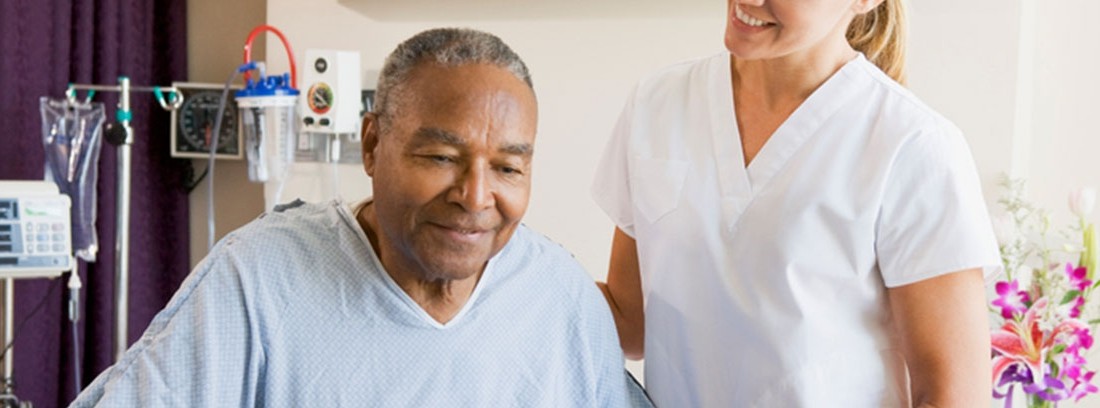Steps to Prevent Pressure Ulcers

Approximately 95% of pressure ulcers are preventable, making the need for prevention a top priority, rather than focusing solely on treating established ulcers.
Every patient bedridden at home should be included in a home care program and undergo a comprehensive geriatric assessment. The program must meet the objective of carrying out health care, prevention, promotion and rehabilitation activities to achieve the highest degree of independence of the patient, the enhancement of self-care, the education of the caregiver and an improvement of the quality of life in the context domiciliary.
Tips for prevention
All patients considered to be at risk of developing pressure ulcers must have a written and personalized prevention care plan with a comprehensive approach that assesses both the skin and the patient's nutritional status and hydration.
Initial assessment of skin condition
Identify the condition of the skin, assessing dryness, excoriations, erythema, maceration, fragility, temperature and induration, sensation of itching or pain and bony prominences (sacrum, heels, ankles, elbows and occiput) to identify early signs of injury.
General care
Prevention should start in all patients considered to be at risk, but especially in the face of non-whitening (localized redness of the skin that does not disappear after 5 minutes without pressure) by means of pressure relief systems, skin protection products type hyperoxygenated fatty acids and hydrocellular dressings (They act like sponges that relieve pressure on bone protrusions). Special attention should be paid to the following points:
- Postural changes Frequently, every two hours and if you are sitting, reposition it every hour.
- Cares for decrease humidity. Incontinence doubles the risk of ulcers.
- Prevent friction, shearing and cutting (excessive dryness, poor hygiene, malnutrition and dehydration, drag)
- Stimulate activity and the patient's movement, both active and passive
- The pressure relief surfaces reduce the incidence of ulcers such as cushions, cushions and anti-decubitus mattresses, made of different materials and systems (lambskin, latex, air with alternating pressure, etc.)
- Hydrocellular dressings, non-adhesive, specifically for the heel, adaptable and / or cuttable for the nasal area, around probes or oxygen glasses.
- If the patient has it, use moisturizers.
- It is not advisable to massage the bony prominences by exerting pressure, nor to knead the muscles, as it will only weaken the skin further.
Nutritional assessment
The control and assessment of the nutrition of the elderly patient will reduce the risk of developing ulcers and, if they appear, their healing will be faster and with fewer complications.
- Control food intake adapting the diet to the individual wishes of the patient or their health condition and stimulating fluid intake. The diet of the patient at risk of developing ulcers must guarantee a minimum intake of calories and protein, as well as vitamins and minerals (such as folic acid, vitamin B12, iron and other trace elements).
- If the patient's usual diet does not meet these needs, they should resort to hyperprotein supplements of oral enteral nutrition to avoid deficiency situations.
Tips for the Patient and Primary Caregiver
The habitual caregiver of the dependent and immobile patient is the most important character in the prevention of pressure ulcers. Your health education and collaboration are vital in this regard. Special attention should be paid and insisted on the following points:
- Frequent position changes, the more the more weight; as a general rule, every 2 hours in bed and every hour in sitting position. The use of anti-decubitus material (cushions, mattresses) can lengthen these intervals, but they should not be a substitute for postural changes.
- The patient must reposition itself at frequent intervals, if it is possible to mobilize by itself, encourage the patient to do so.
- Do not drag the skin through the sheets when repositioning or elevating the patient. Assistive devices such as trapezoids or cranes, forklifts or other alternatives are better. Caregivers must be trained in good mechanics to avoid injury to the patient and himself.
- Keep the clean patient clothes, dry and wrinkle free.
- Avoid placing it about ulcers already existing.
- Inspect the skin systematically and keep it clean, dry and hydrated.
- Use warm water and neutral soaps in daily hygiene and meticulous frictionless drying.
- Use hydrating creams, avoid colonies, alcohol or talcum powder, as they cause and facilitate skin dryness.
- Lubricate the skin with hyperoxygenated fatty acids several times a day, with gentle circular massage without pressure in risk areas, take advantage of postural or diaper changes for its application.
- Keep an eye on the bumps. Do not massage with pressure on the bony prominences.
- If the patient has incontinenceMoisture must be avoided, as it causes maceration and edema of the skin. Use absorbent and size diapers appropriate to the amount of urination and body size of the patient; a higher absorbency diaper does not mean fewer changes.
- Do not use floats or other non-specific devices.
- Avoid lifting the Bed head more than 30º, keeping the back straight with cushions, since tangential and shear forces are increased in the sacral area.
(Updated at Apr 13 / 2024)